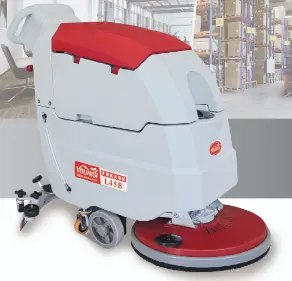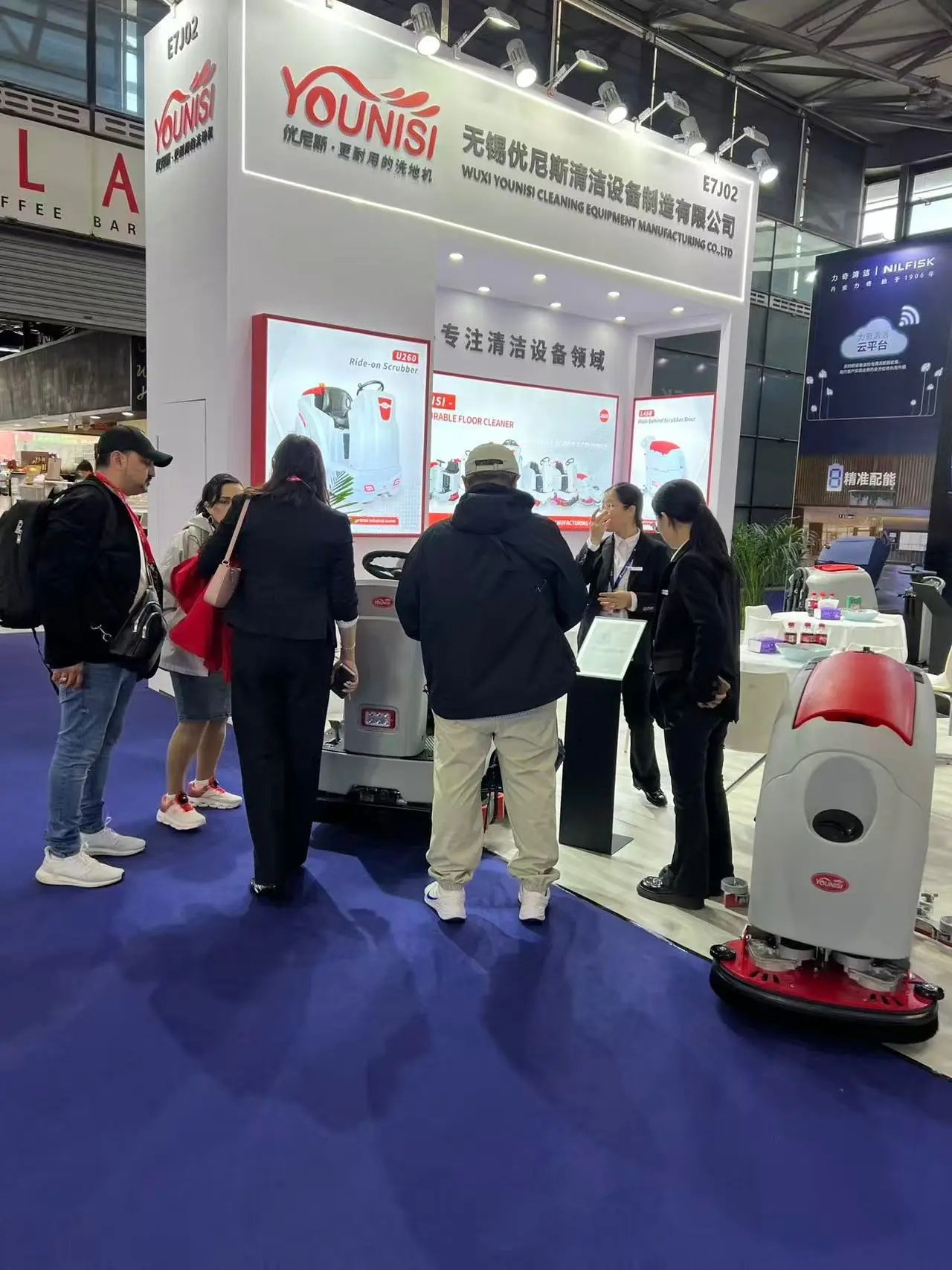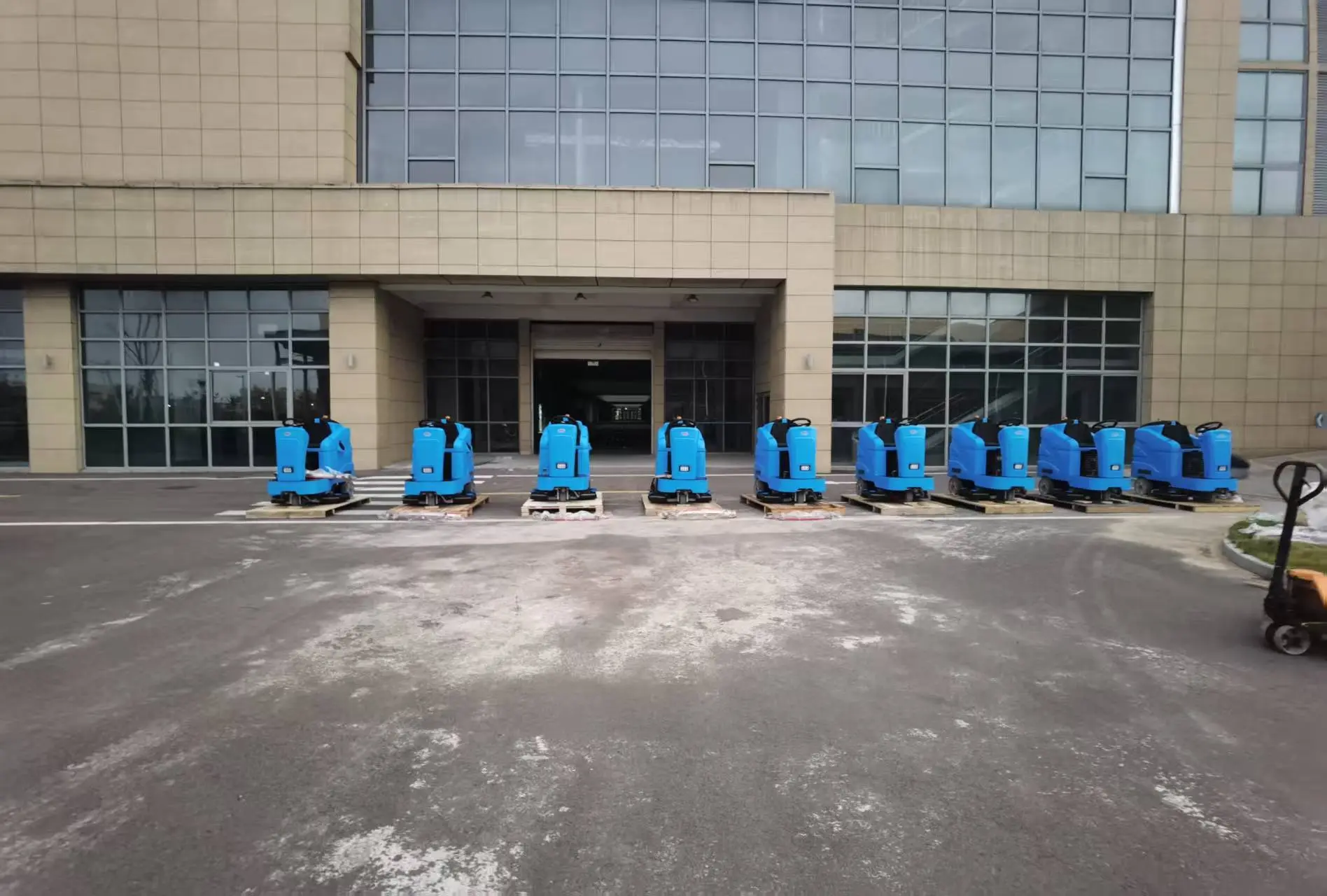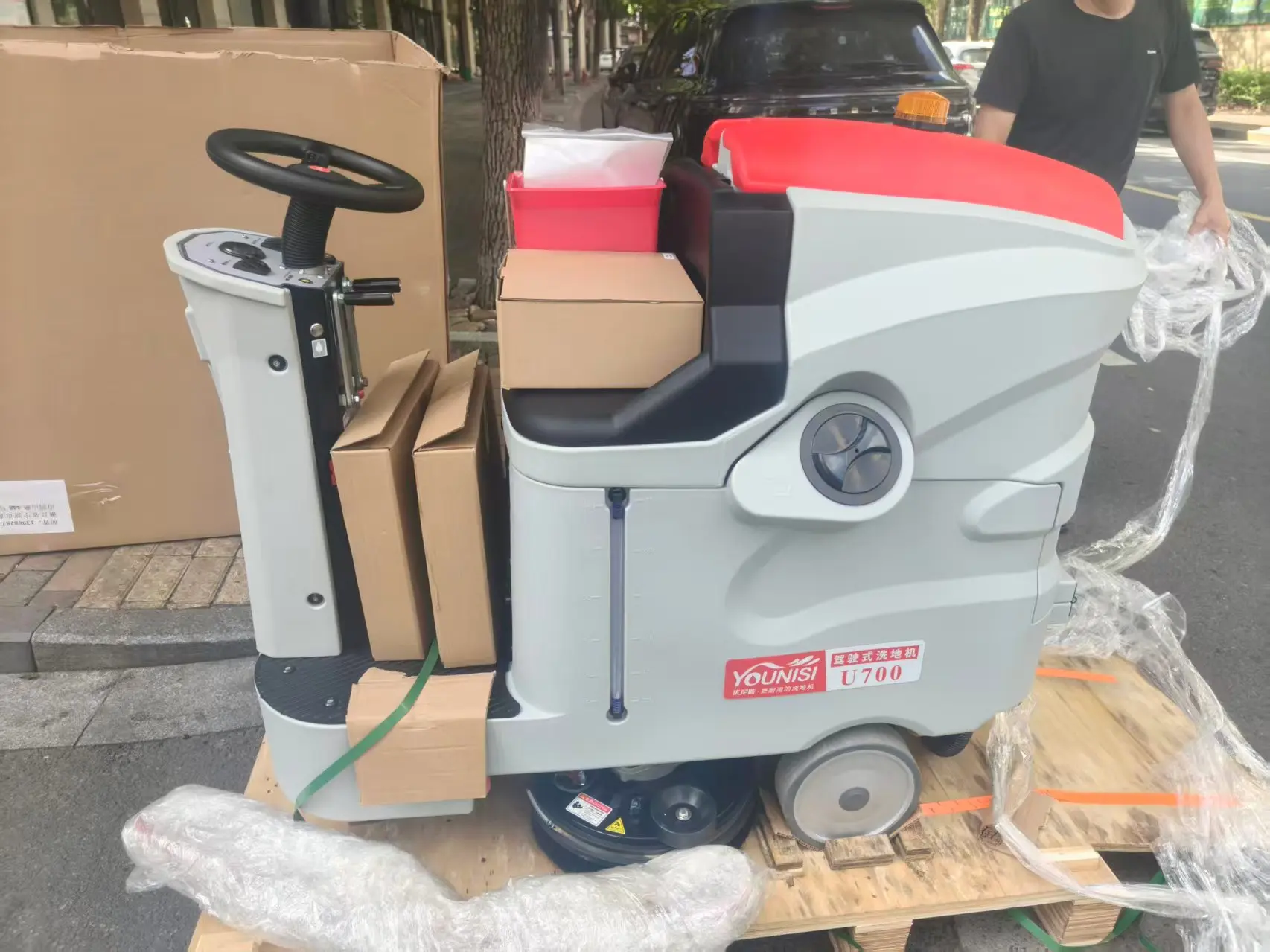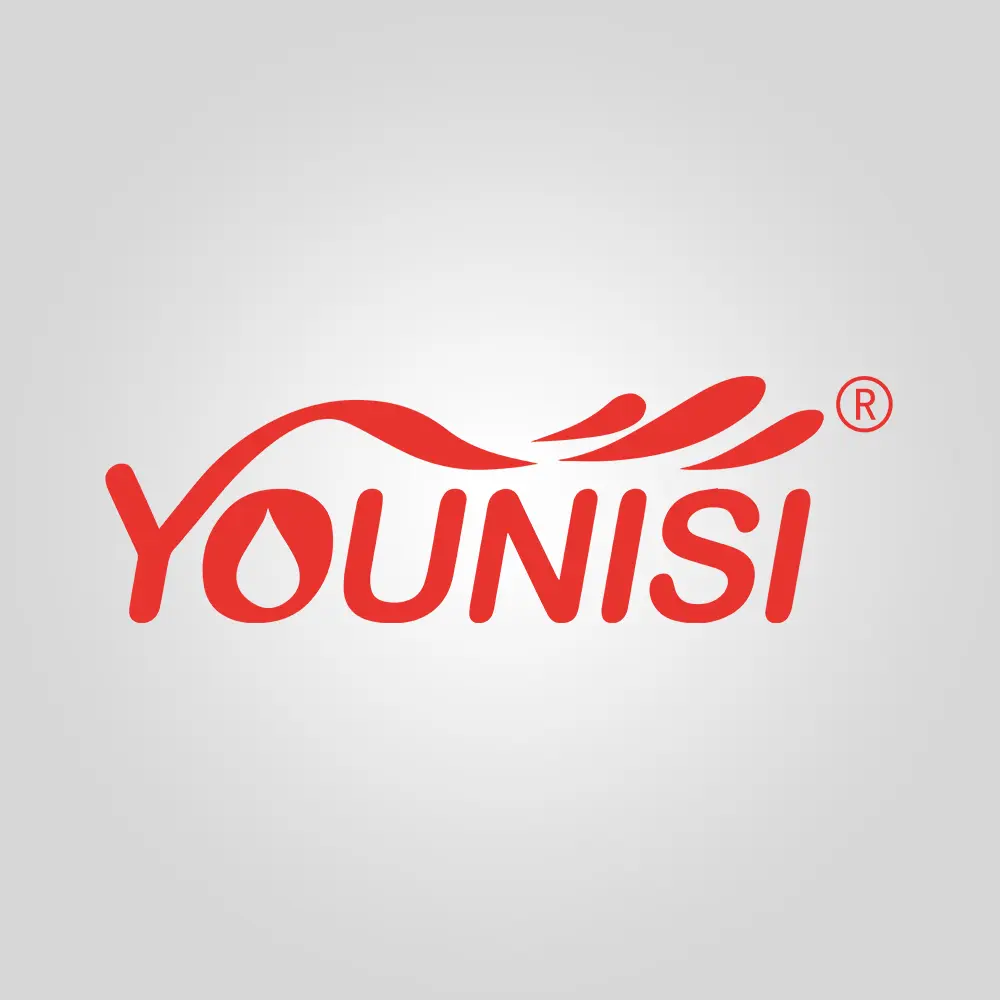Professional Cleaning Solution: How to Choose Between Floor Scrubbers and Sweepers for Different Commercial Environments
I. Core Functional Differences Between Floor Scrubbers and Sweepers
Floor Scrubber
Functional Features: Integrates washing, suction, and drying to handle stubborn stains, grease, water marks, and other wet contaminants.
Cleaning Method: Uses rotating brushes or pads with water/cleaning solution to scrub floors while simultaneously recovering dirty water.
Applicable Scenarios: Ideal for environments requiring deep cleaning, disinfection, or liquid stain removal.
Floor Sweeper
Functional Features: Primarily targets dry debris like dust, fragments, and gravel, collecting waste into a dustbin via rotating brushes or side brushes.
Cleaning Method: Pure physical sweeping, with some high-end models featuring suction capabilities.
Applicable Scenarios: Best for routine dry waste cleaning, particularly suitable for open, large spaces.
II. Commercial Environment Selection Guide: Which Scenarios Favor Scrubbers? Which Favor Sweepers?
(1) Scenarios Best Suited for Scrubbers
Scrubbers excel at handling wet, sticky stains and offer disinfection functions, making them ideal for:
Food Service: Kitchen and dining areas (grease, food residues)
Healthcare Facilities: Hospital corridors, outpatient halls (require frequent disinfection)
Industrial Workshops: Food processing plants, pharmaceutical facilities (high contamination control requirements)
Retail Spaces: Fresh produce sections, restroom areas (prone to water accumulation and needing slip resistance)
(2) Scenarios Best Suited for Sweepers
Sweepers are more effective for large-scale dry waste cleaning, suitable for:
Warehousing/Logistics: Storage facilities, distribution centers (dust, paper scraps, packaging materials)
Office Buildings: Hallways, open-plan offices (routine dust, hair)
Parking Lots: Underground garages (gravel, dirt)
Schools/Sports Venues: High-traffic hard floor areas
III. Equipment Lifespan and Maintenance Cost Comparison
Floor Scrubber:
Average Lifespan: 3-5 years (requires more frequent maintenance under heavy use)
Core Consumables: Brushes, suction squeegees, filters
Maintenance Frequency: Higher (daily wastewater tank cleaning required)
Energy Costs: Higher (consumes both water and electricity)
Floor Sweeper:
Average Lifespan: 5-8 years (simpler structure, less wear)
Core Consumables: Main brush, side brush, filters
Maintenance Frequency: Lower (periodic dustbin emptying sufficient)
Energy Costs: Lower (electricity only)
Recommendations:
For environments with primarily grease/liquid cleaning needs (e.g., restaurants, hospitals), scrubbers are essential despite higher maintenance costs.
For dust/particulate-dominated environments (e.g., warehouses, garages), sweepers offer longer lifespan and better cost-efficiency.
IV. Combination Strategies for Special Scenarios
For complex commercial spaces (e.g., shopping malls, airports), a "sweeper for routine maintenance + scrubber for targeted deep cleaning" combination provides both cost control and cleaning effectiveness.
Conclusion
Neither scrubbers nor sweepers are universally superior - the key lies in matching equipment to actual needs. With sufficient budget, we recommend selecting the most suitable equipment or combination based on site contamination types, foot traffic, and cleaning standards to achieve efficient, economical cleaning management.
So is there a machine that can both clean floor garbage and wash the floor? The YounisiU800R Battery Rider Sweeper-Scrubber is a multifunctional sweeper-scrubber that combines sweeping and washing, saving costs and improving efficiency for diverse venues!

